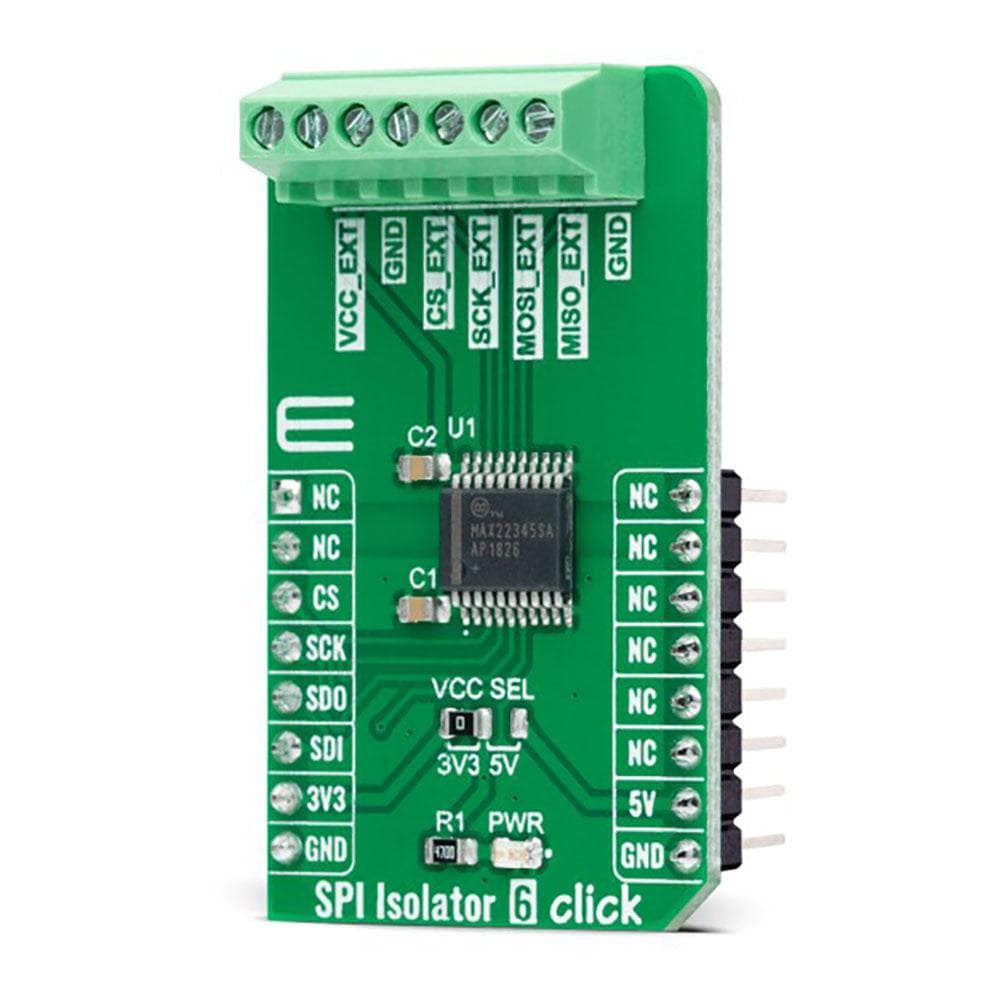
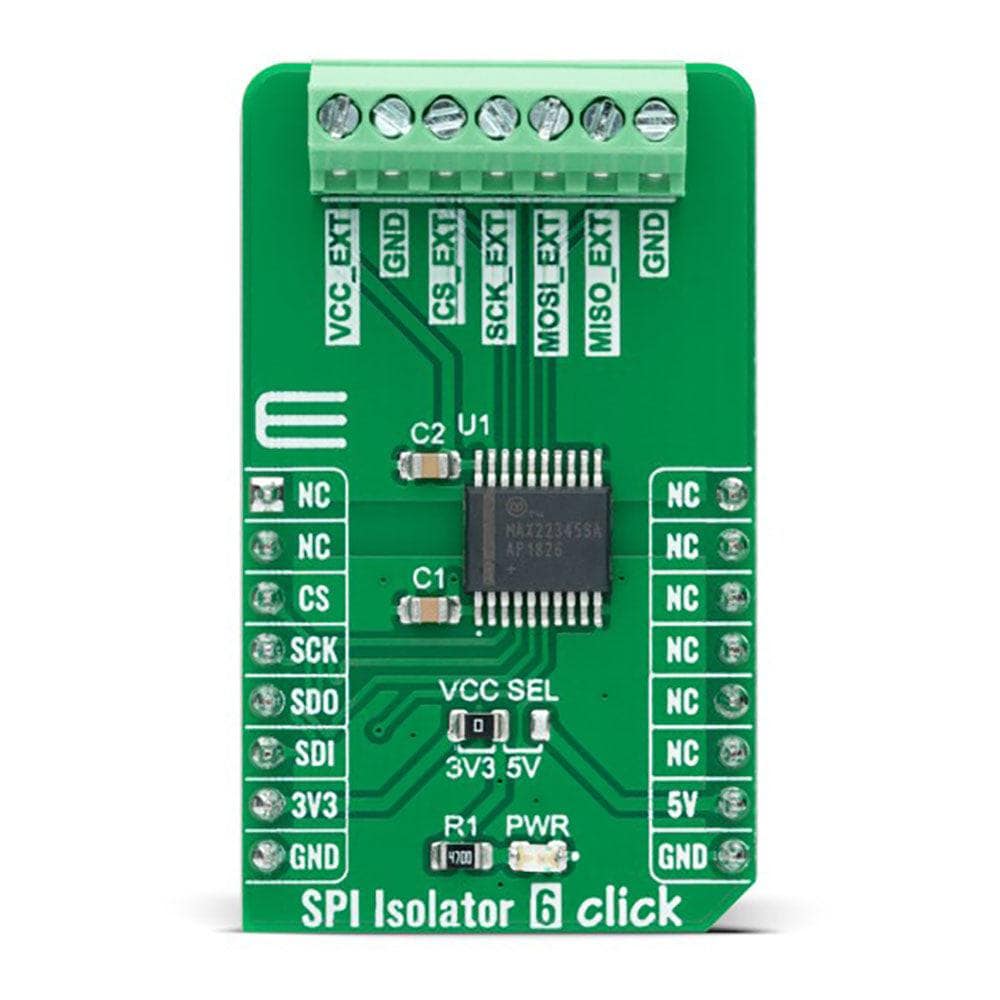
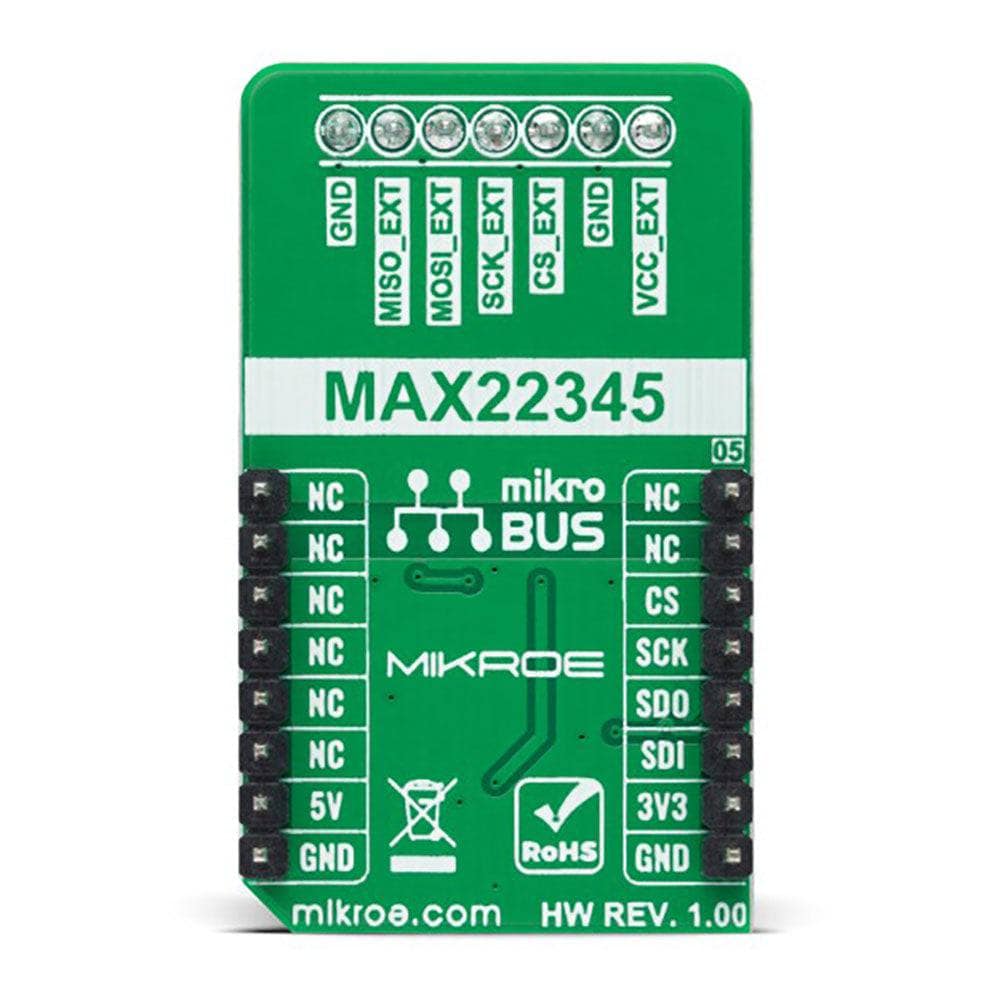
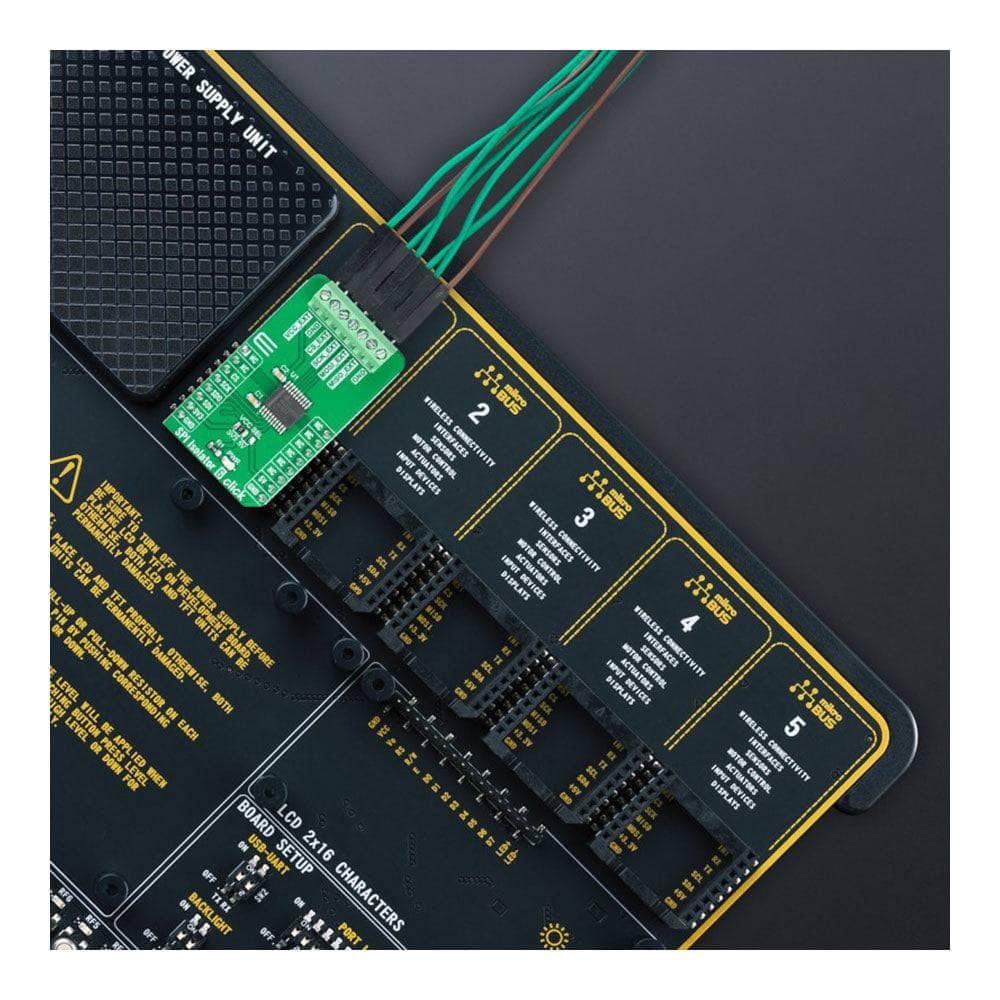
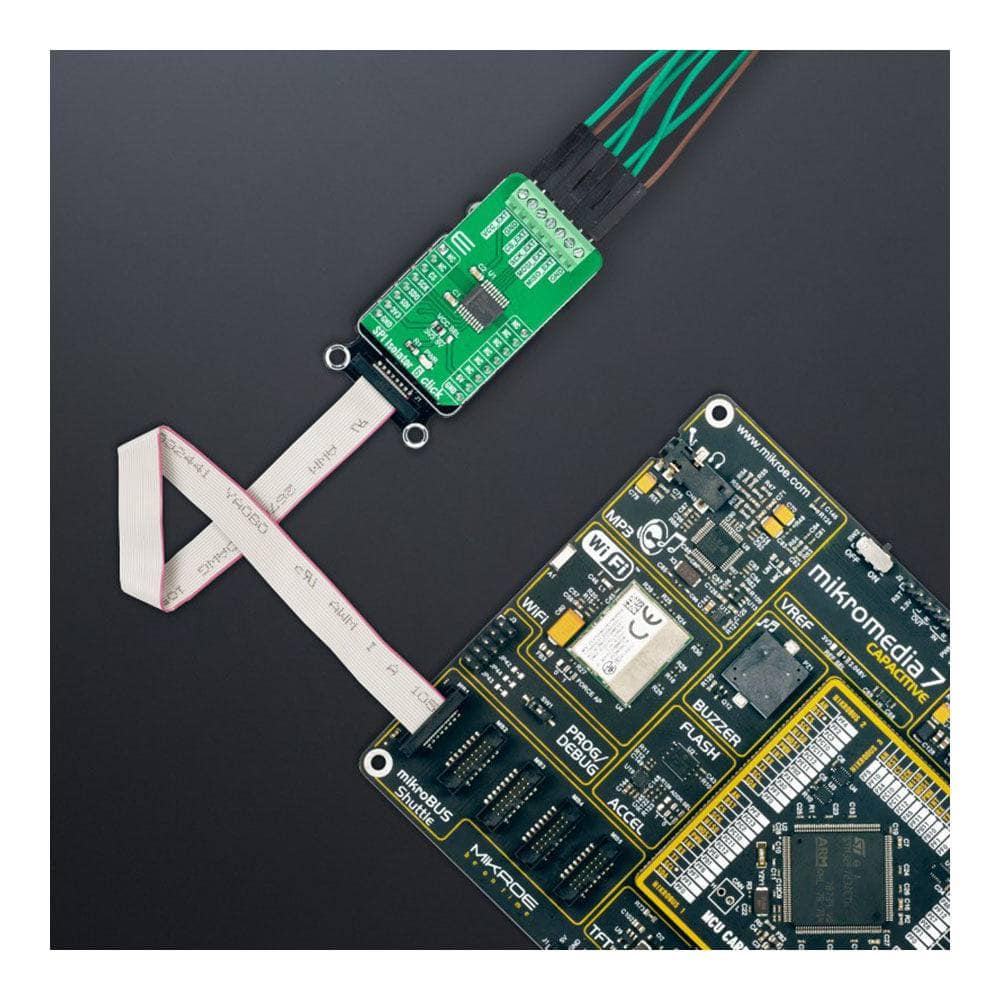
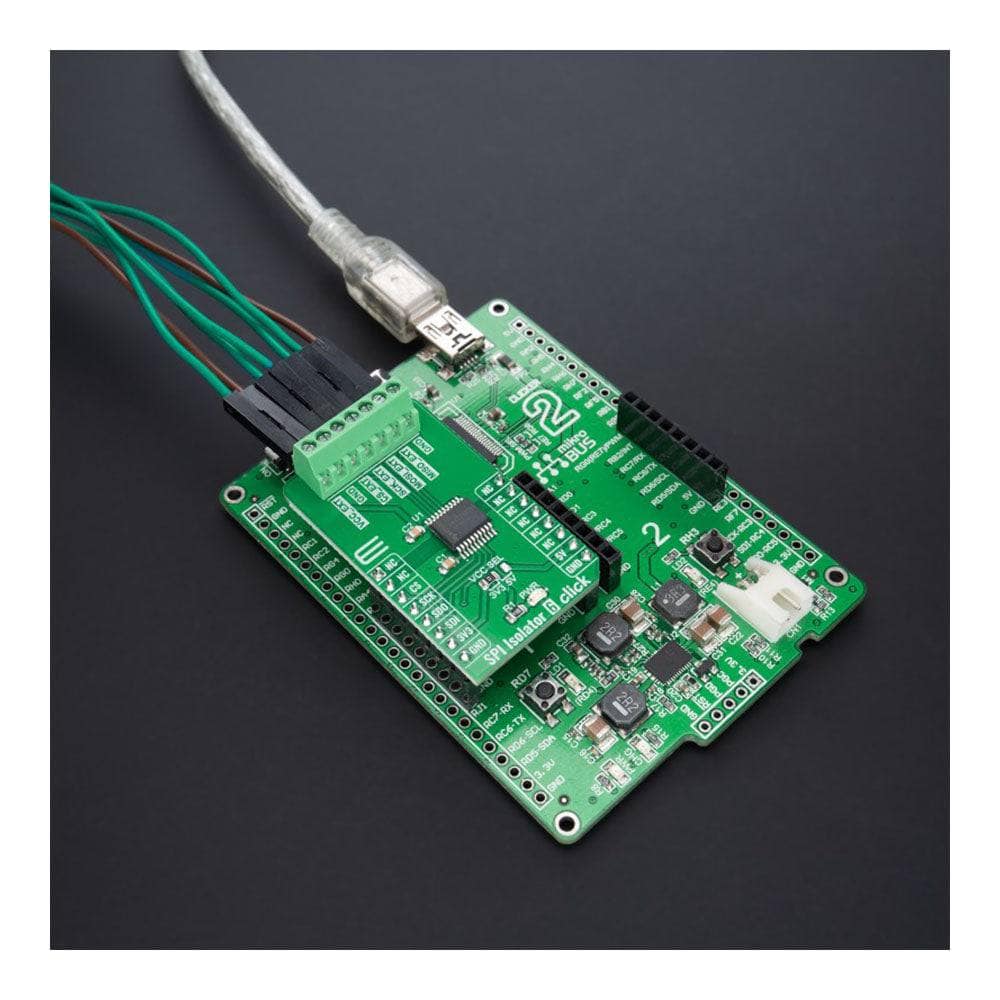
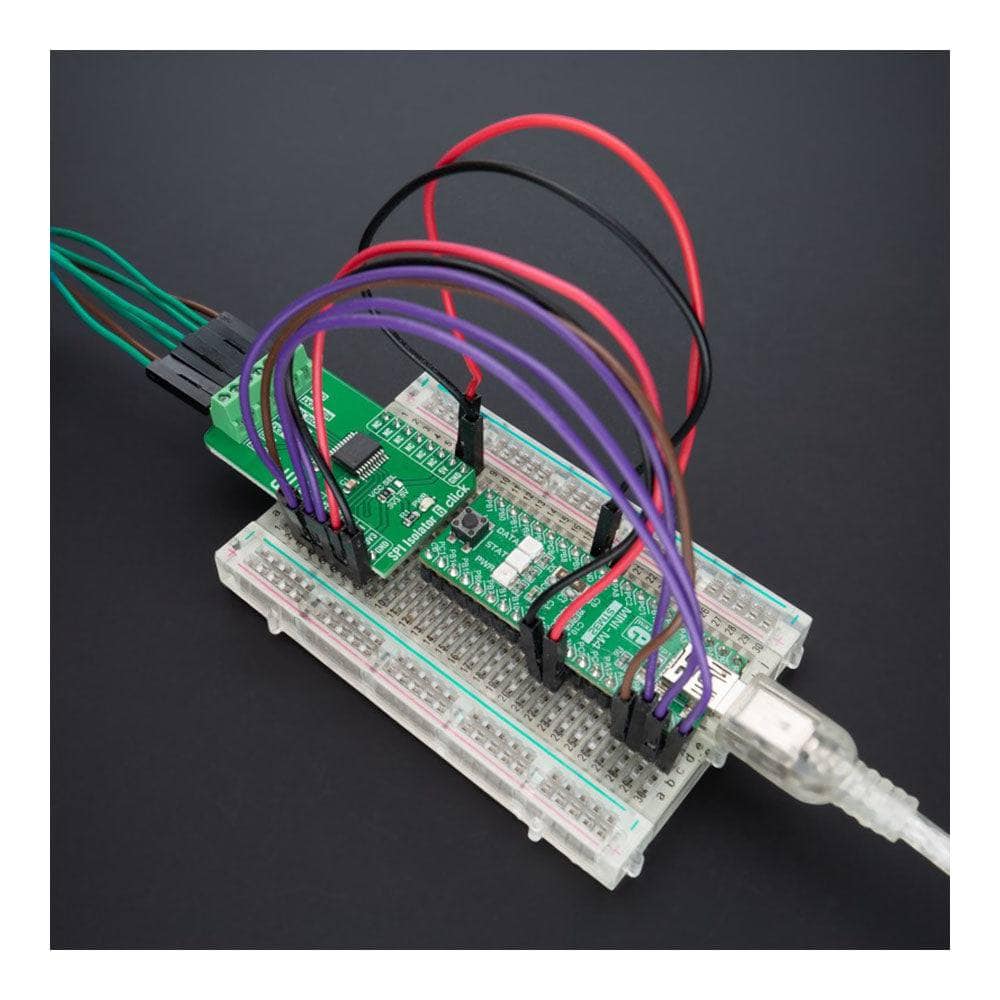
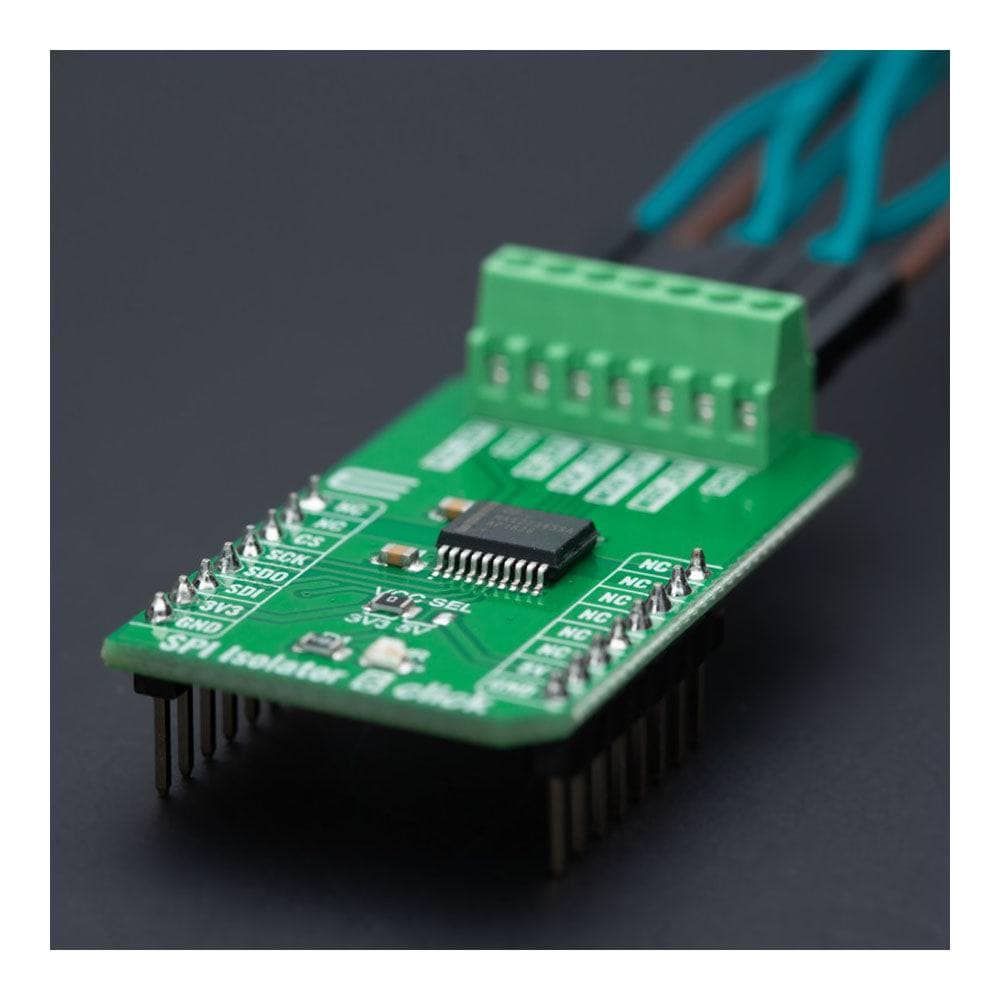
Key Features
Overview
The SPI Isolator 6 Click Board™ is a compact add-on board representing a digital isolator optimized for a serial peripheral interface. This board features the MAX22345, a fast, low-power 4-channel digital galvanic isolator from Analog Devices. This device comes with a maximum data rate of 200Mbps and transfers digital signals between circuits with different power domains featuring reinforced isolation for a withstand voltage rating of 3.75kVRMS for 60 seconds. This Click board™ is suitable for general SPI-bus isolation, industrial, process and building automation, programmable logic controllers, and many more.
The SPI Isolator 6 Click Board™ is supported by a mikroSDK compliant library, which includes functions that simplify software development. This Click board™ comes as a fully tested product, ready to be used on a system equipped with the mikroBUS™ socket.
Downloads
Das SPI Isolator 6 Click Board™ ist eine kompakte Zusatzplatine, die einen digitalen Isolator darstellt, der für eine serielle Peripherieschnittstelle optimiert ist. Diese Platine verfügt über den MAX22345, einen schnellen, stromsparenden digitalen galvanischen 4-Kanal-Isolator von Analog Devices. Dieses Gerät verfügt über eine maximale Datenrate von 200 Mbit/s und überträgt digitale Signale zwischen Schaltkreisen mit unterschiedlichen Leistungsbereichen mit verstärkter Isolierung für eine Spannungsfestigkeit von 3,75 kVRMS für 60 Sekunden. Dieses Click Board™ eignet sich für allgemeine SPI-Bus-Isolierung, Industrie-, Prozess- und Gebäudeautomatisierung, speicherprogrammierbare Steuerungen und vieles mehr.
Das SPI Isolator 6 Click Board™ wird von einer mikroSDK-kompatiblen Bibliothek unterstützt, die Funktionen enthält, die die Softwareentwicklung vereinfachen. Dieses Click Board™ wird als vollständig getestetes Produkt geliefert und ist bereit für den Einsatz auf einem System, das mit der mikroBUS™-Buchse ausgestattet ist.
| General Information | |
|---|---|
Part Number (SKU) |
MIKROE-5265
|
Manufacturer |
|
| Physical and Mechanical | |
Weight |
0.02 kg
|
| Other | |
Country of Origin |
|
HS Code Customs Tariff code
|
|
EAN |
8606027388064
|
Warranty |
|
Frequently Asked Questions
Have a Question?
Be the first to ask a question about this.








